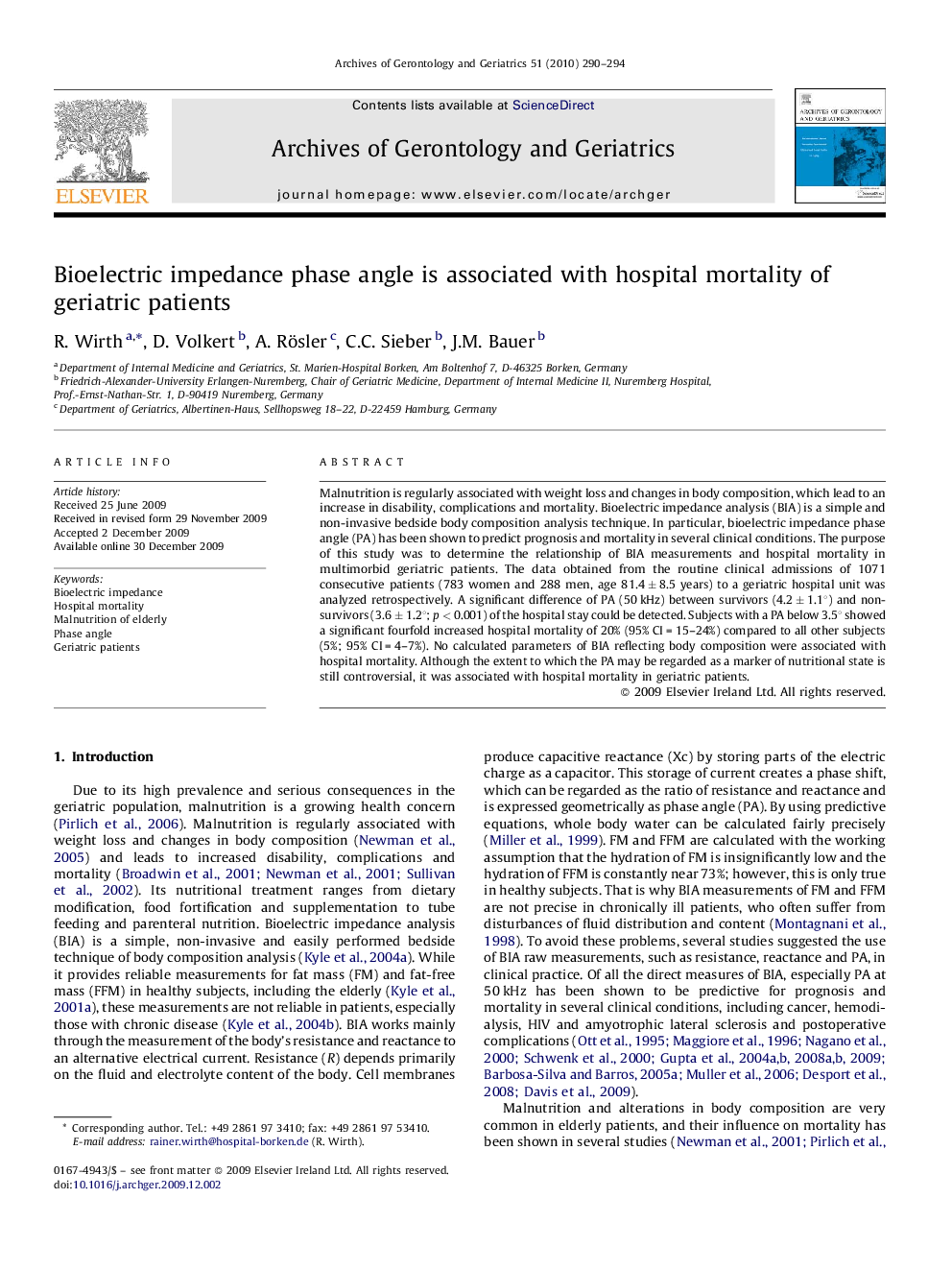| Article ID | Journal | Published Year | Pages | File Type |
|---|---|---|---|---|
| 1903706 | Archives of Gerontology and Geriatrics | 2010 | 5 Pages |
Malnutrition is regularly associated with weight loss and changes in body composition, which lead to an increase in disability, complications and mortality. Bioelectric impedance analysis (BIA) is a simple and non-invasive bedside body composition analysis technique. In particular, bioelectric impedance phase angle (PA) has been shown to predict prognosis and mortality in several clinical conditions. The purpose of this study was to determine the relationship of BIA measurements and hospital mortality in multimorbid geriatric patients. The data obtained from the routine clinical admissions of 1071 consecutive patients (783 women and 288 men, age 81.4 ± 8.5 years) to a geriatric hospital unit was analyzed retrospectively. A significant difference of PA (50 kHz) between survivors (4.2 ± 1.1°) and non-survivors (3.6 ± 1.2°; p < 0.001) of the hospital stay could be detected. Subjects with a PA below 3.5° showed a significant fourfold increased hospital mortality of 20% (95% CI = 15–24%) compared to all other subjects (5%; 95% CI = 4–7%). No calculated parameters of BIA reflecting body composition were associated with hospital mortality. Although the extent to which the PA may be regarded as a marker of nutritional state is still controversial, it was associated with hospital mortality in geriatric patients.
